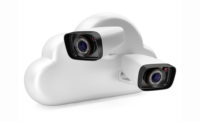Charging Up RMR With Power Supply Products & Services

Power supply is an integral part of a proactive network that provides a comprehensive, 24/7 analysis into security system health and viability. // METAMORWORKS/ISTOCK / GETTY IMAGES PLUS VIA GETTY IMAGES
Today’s security systems are more sophisticated than ever, and the power supply products that keep them running must be equal to the challenge. Starting with the introduction of power over Ethernet (PoE) connectivity in the early 2000s, power supply products and services have evolved to meet those needs, with advances like native integrations to access control software platforms, network monitoring of multiple power sites, energy management as a service (EMaaS), and more.
“Power supply is an integral part of a proactive network that provides a comprehensive, 24/7 analysis into security system health and viability,” says Michael Bone, marketing manager, LifeSafety Power, an access control power supply manufacturer owned by ASSA ABLOY and based in Phoenix. “Power management solutions are an integral component to guaranteed uptime of connected systems. These systems are essential to physical security and integrated systems, protecting lives, people, property and the critical infrastructure.”
And savvy security integrators and dealers can leverage these products and services to increase recurring monthly revenue (RMR) and grow customer relationships.
“Power has moved squarely into the realm of high tech, with the ability to provide a proactive solution that guarantees uptime and can be managed remotely by both technician and end user.”
— Michael Bone, LifeSafety Power
Power supply-related RMR is “is highly attainable,” Bone says. “Managed power services, including remote monitoring and servicing, brings a wide array of RMR opportunities to the security integrator — another added benefit that boosts the long-term profitability of every job.”
“Power has moved squarely into the realm of high tech, with the ability to provide a proactive solution that guarantees uptime and can be managed remotely by both technician and end user,” he adds. “There’s an emphasis on system designs that speed installations and promote efficiency and resiliency across the enterprise.”

Today’s power supply systems are more compact and easily installable than ever before. Altronix’s Trove access and power integration products include power distribution and wire management, and new accessories including color-coordinated matching enclosures. // IMAGE COURTESY OF ALTRONIX
Users can manage and control today’s power solutions through the web with an intuitive browser interface, providing them with real-time remote monitoring and control capability, increasing the power system’s return on investment, Bone adds. “Networked power maximizes system uptime and saves maintenance costs, a definite plus for the end user.”
When asked about the latest trends in power supply, Ronnie Pennington, director of sales, Americas, for Altronix Corp., Brooklyn, N.Y., pointed to new physical configurations that save space and make systems easier to install and maintain. “Altronix products are designed to save valuable space and labor, reducing installation and service costs and providing the end user with an overall better ROI,” he says.
Higher-capacity wall- and rack-mount enclosures, along with pre-configured kits, enable power and control of more doors in a security system, while complementary battery enclosures and wiring troughs make for a cleaner, sleek installation, Pennington says. “New compact multi-output access power controllers and sub-assemblies have a unique stackable design to free up much-needed space for more controller boards,” he adds.
Today’s power systems have transformed into sleek, engineered solutions with all components in a single enclosure, Bone adds. “Having system power, lock power and access control modules in one housing saves space and serves as the perfect footprint for IDF [intermediate distribution frame] closets or limited-space data centers,” he says. And fully pre-wired solutions provide even greater return on equity for end users through labor savings and consistency across an enterprise.
“Pre-wired power kits which include power distribution, wire assemblies and wire management allow integrators to deploy access systems faster, streamlining installation.”
— Ronnie Pennington, Altronix Corp.
Modern PoE systems can cover the entire power range of equipment over various categories and meet the power level requirements for anything in the security field, says Neil Heller, vice president of business development for Vigitron, a global manufacturer of analog and IP transmission solutions based in San Diego. “PoE brings simplicity to installation and the ability of centralized control, two very important aspects.”
Today’s systems are simpler than ever to install and manage, making life easier for integrators and end users alike. Top brands like Altronix’s Trove system combine power and access controllers in a single wall mount or rack mount enclosure, providing a single point for service and maintenance — a benefit for both integrators and end users, Pennington says. “Pre-wired power kits which include power distribution, wire assemblies and wire management allow integrators to deploy access systems faster, streamlining installation.”
A PoE & Security Devices: More Power to You
One of the biggest innovations in power supply came with the advance of power over Ethernet (PoE), which passes both electric power and data over twisted-pair Ethernet cable to powered devices such as wireless access points, IP cameras and VoIP phones. PoE eliminates the need for AC/DC power supplies and outlets to power device (PD) equipment, lowering cost and simplifying installation.
The original PoE standards set in 2009 by the Institute of Electrical and Electronic Engineers (IEEE) were 802.3af, which allowed for a maximum transmission of 15.4 watts. While this was adequate for many devices at the time, 802.3bt, introduced in 2018, pushes the limit of power sourcing equipment (PSE) to 90W and PDs to 71.3W. This is achieved by utilizing all four pairs of the structured wiring. IEEE 802.3bt also supports multiple PoE classes and is backward compatible.
In the security industry, PoE is primarily used in IP cameras; however, over the past several years more access control manufacturers are transitioning to its use. It’s commonly used in LED lighting as well, says Neil Heller of Vigitron.
“The good part is that PoE today covers the entire power range of equipment over various categories and meets the power level requirements for anything out there in the security field,” he says. “PoE brings simplicity to installation and the ability of centralized control, two very important aspects.”
PoE has been a game-changer for the power supply market because it eliminates the need for AC/DC power supplies and outlets to PD equipment. “As camera and visual technology has improved, such as analytics in cameras, day/night thermal, multisensory — all of these are the reason and drive for more power,” Heller says. “All of this could not be done without PoE, and that was the motivating force of why security camera manufacturers got way ahead. … It’s very likely that as more features are added to cameras, the need for power is going to increase even further.”
However, there are some downsides to the use of PoE, Heller says. Before the IEEE 802.3bt standard, camera manufacturers that needed more power for their products adopted different types of higher-source PoE, such as Cisco’s proprietary Universal Power over Internet (UPoE), which provides maximum power levels of 74W. The earlier lack of standardization created a hodgepodge of different sources and requirements, resulting in incompatibility between older and newer power sources and resulting in end users assuming that the cameras are defective. This results in loss of time and profitability for the dealer, Heller says.
Another variable that can affect device function with PoE is the type of cabling used. PoE standards are dependent on CAT cable and more specifically, CAT 5, 5e, 6 and 6a. The security industry uses different types of cable connections such as single pair, coax, fiber and more. These have an effect not only on the type of power but the amount of power transmitted.
To further complicate things, before the IEEE adoption of 30W standards, chip manufacturers brought out their own 30W solutions. Different manufacturers make these PSE chips, so the chip that’s in a camera or other device powered by PoE may not be compatible with the existing power system, Heller says.
“Take a PD chip, of which there are six manufacturers in the world, all different, then distribute to hundreds of camera manufacturers, who all design it a bit differently, and you can see the problem,” he says.
This is why it’s critical for integrators to educate themselves about the power supply systems they install, Heller contends. “The customer just has one concern — they want their problem solved. They don’t care about the technology; it’s the integrators that need to be educated,” he says. “Don’t assume. Ask questions. Read the spec sheet. If you don’t understand what you’re reading, call the manufacturer.”
As an added benefit, integrators can incorporate modern power supply systems into their RMR strategy, boosting revenue and solidifying customer relationships. Proactive notifications, data reporting and historical documentation are all ways integrators can add RMR with power supply products and services, Bone says. And remote servicing capabilities such as remote or scheduled battery testing, the ability to remotely power cycle outputs and remote troubleshooting can minimize the need for a technician to physically visit a site.
For example, Altronix access controllers and power distribution models come with an embedded LINQ network communication and control solution, which enables users to control, monitor and report system diagnostics remotely, anywhere over the network, Pennington says. LINQ facilitates fast and easy installation and set-up, minimizes system downtime and eliminates unnecessary service calls, which helps reduce total cost of ownership, he adds.
“These solutions boost RMR as it greatly reduces onsite visits for service and maintenance, with the ability to diagnose any issues remotely,” he says. “Managed power services can be applied to the main power supply, power system outputs, locks, access control modules and standby batteries. Managed monitoring encompasses event reports, AC loss notification, service-due reminders, impending lock failure, low-battery warning, insufficient battery standby and more. Remote servicing capabilities yield information on output supervision, remote scheduled battery load testing, remote power cycling and system health logs/trouble alerts.”
The Latest Power Supply Products
Altronix
Altronix’s featured power supply brands include:
- NetWay Spectrum — PoE and fiber solutions. Enables users to deploy IP devices in remote locations with or without local power.
- Trove — access and power integration. Users can easily combine Altronix power with access controllers from the leading brands.
- Tango — PoE-driven access power. Customers can utilize 802.3bt PoE to deploy access control systems, providing a plug-and-play power option.
- Pace — long-range Ethernet. End users can extend Ethernet range over structured cable up to 500m or single pair up to 1000m without repeaters.
- eBridge — Ethernet over coax. Users can upgrade to IP utilizing existing coax infrastructure, saving time and labor.
LifeSafety Power
LifeSafety Power, part of ASSA ABLOY, offers a full line of power management solutions, including network management, maximizing uptime and ROI for the user and providing an opportunity for additional RMR for the integrator. Network managed power, using the NL4 or NLX NetLink modules, yields information and control over the power supply, battery set and the locking devices. Power cycling a device to reset can be accomplished remotely without resetting the entire access control system or taking it offline. With the NetLink, frozen access control panels, DC cameras or other devices may be remotely reset individually, saving the technician time and the end user money. Custom high- and low-alert triggers may be set for each output, warning the user of not only current problems, but impending issues with locks or other devices. Featuring an onboard RS-485 connection, the NLX network communication module is ideal for remote monitoring applications using distributed power monitoring (DPM). DPM allows a single network module to monitor multiple access control power enclosures from one network drop.
BiTSTREAM allows an installer to power an access control system exclusively through PoE, eliminating the need for field wiring and AC drops. BiTSTREAM’s centralized fire alarm drop feature allows egress on fire alarms through a single fire alarm connection rather than needing to bring the fire alarm panel wiring to each door. BiTSTREAM is a UL294 family of IEEE 802.3bt-compliant PoE midspan injectors and PoE switches specifically designed for the access control and security industries. With BiTSTREAM, installers can eliminate the need for a high voltage electrician while simplifying access control installations with features such as integrated fire alarm disconnect, battery charging and remote monitoring and control.
Vigitron
Vigitron offers a full range of power supply products, from coax and PoE devices to mounting systems, industrial switches and test equipment. Vigitron can provide PoE on all types of cables, whether transmission media is UTP, fiber or coax. Vigitron products provide a true universal solution for 802.3af/at/bt for all eight classes of PoE, removing the guesswork from selecting a PoE solution. These include:
- Network switches with all ports providing 802.3bt.
- A new series of managed midspans use the company’s MPoE firmware providing 802.3bt.
- Vi50000U fiber-to-UTP cable, providing 802.3bt.
- Vi30202U coax-to-UTP cable, providing 802.3bt.
Heller adds, “When you’re in a network environment that includes more aspects than PoE, depending on the agreement with the end user, integrators can more efficiently observe and fix problems.” For integrators, “When the customer allows me into their network, rather than send out a truck, I might be able to reset and fix that problem from my office. That’s the primary advantage [of PoE]; they can monetize it if they are servicing the customer on that basis, whether on an individual service call or part of a service contract, they’re more efficient.”

LifeSafety Power’s E8M2 MCLASS is a fully network managed, prewired 16-door Mercury power management system. // IMAGE COURTESY OF LIFESAFETY POWER
Managed power services, including remote monitoring and servicing, and energy management as a service (EMaaS), increase the value proposition of these solutions with the ability to earn consistent recurring monthly revenue, Bone says. “Prewired power frees up valuable tech time, speeding job completion and allowing the integrator to move on to the next job quickly.”
End users can apply managed power services to the main power supply, power systems outputs, locks, access control modules and standby batteries, he adds. Managed monitoring encompasses event reports, access control loss notification, service-due reminders, impending lock failure, low-battery warning, insufficient battery standby and more. Remote servicing capabilities yield information on output supervision, remote scheduled battery load testing, remote power cycling and system health logs/trouble alerts.
“End users want to know ahead of time if there’s trouble with a powered device such as a lock, or if maintenance is necessary, rather than being surprised with a costly service call in the evening or on the weekend,” Bone says. “With managed power services and power monitoring, they have new intelligence, networking and historical data at their fingertips, helping them better manage the facility for higher levels of security and safety and a lower total cost of ownership.”
The need for intelligent power will only increase as systems become more interconnected and any downtime could be devastating and result in loss of assets, business continuity, reputation and customers, Bone says.
“The value proposition is there,” he adds. “It just needs to be communicated to the customer so they understand the importance of power to the bottom line.”
Looking for a reprint of this article?
From high-res PDFs to custom plaques, order your copy today!








